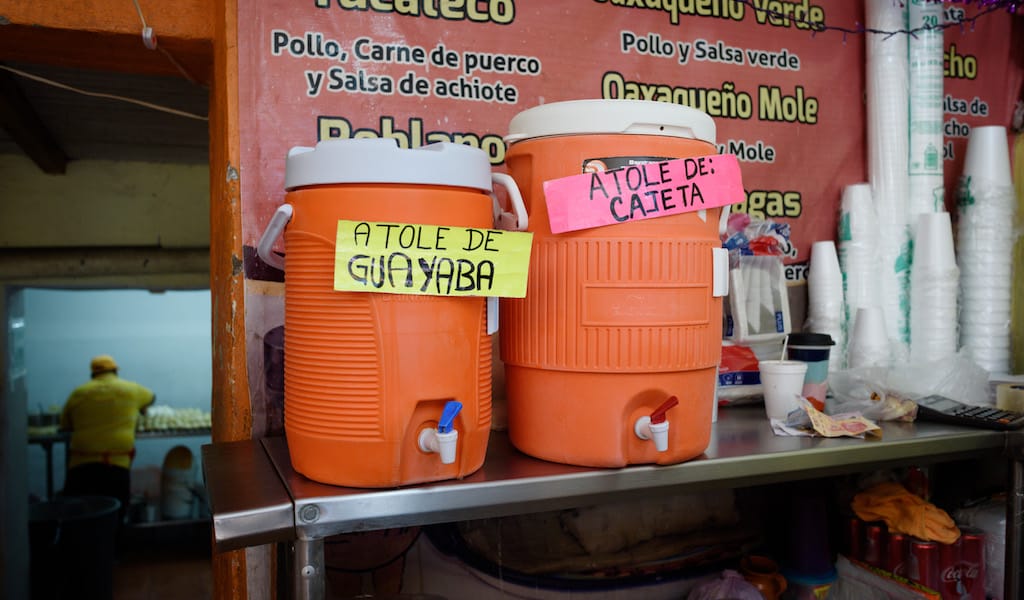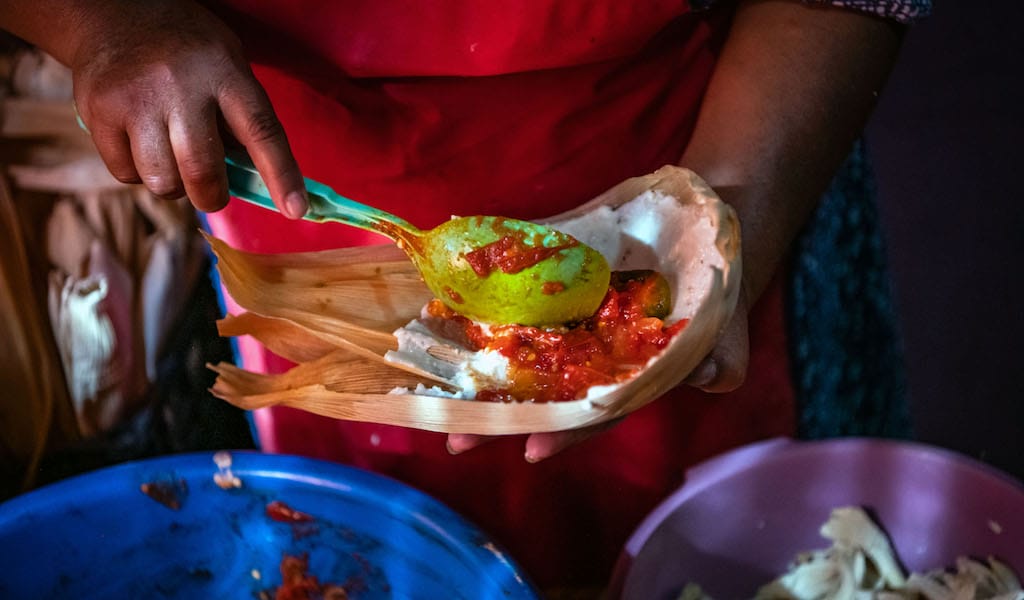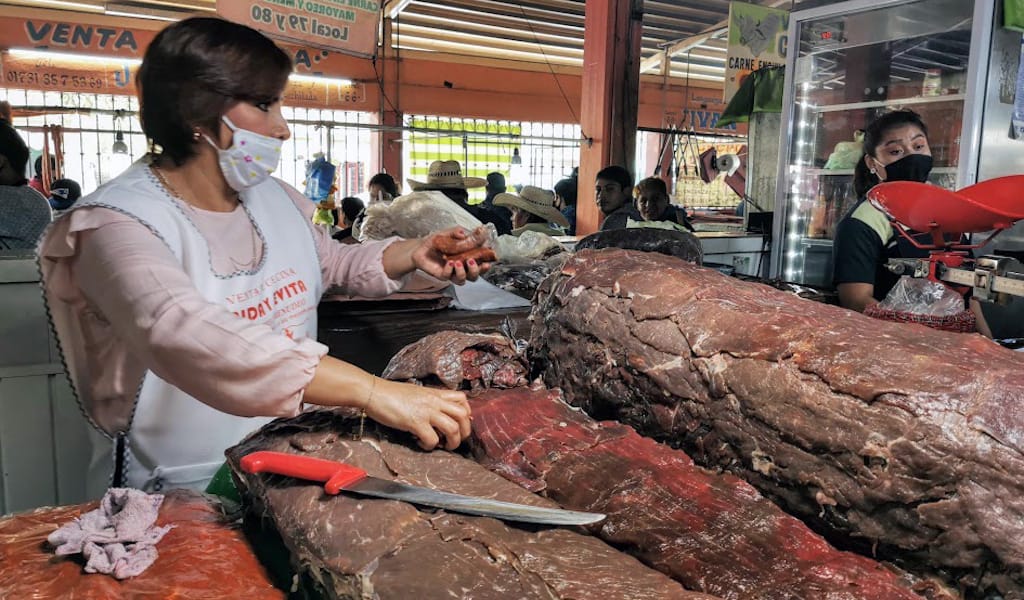Corn is so vital to Mexican cuisine and culture that we could scarcely avoid it even if we wanted to. Not that we would ever want to – one of the things we love most about dining in Mexico is the high likelihood that our meal will have a healthy dose of corn in one form or another.
Take atole, a traditional beverage made of corn flour, fruit, spices, and milk or water, which is often sold alongside tamales, corn patties most often stuffed with meat or veggies, steamed in a corn husk or banana leaf. Wash down your corn with some corn; that’s the Mexican way.
Most often served hot, atole is particularly popular around Christmas and New Year, when temperatures in certain parts of Mexico can drop to 30 degrees Farenheit at night. Though it can be found year round, atole is also a popular drink during the Día de los Muertos celebrations.
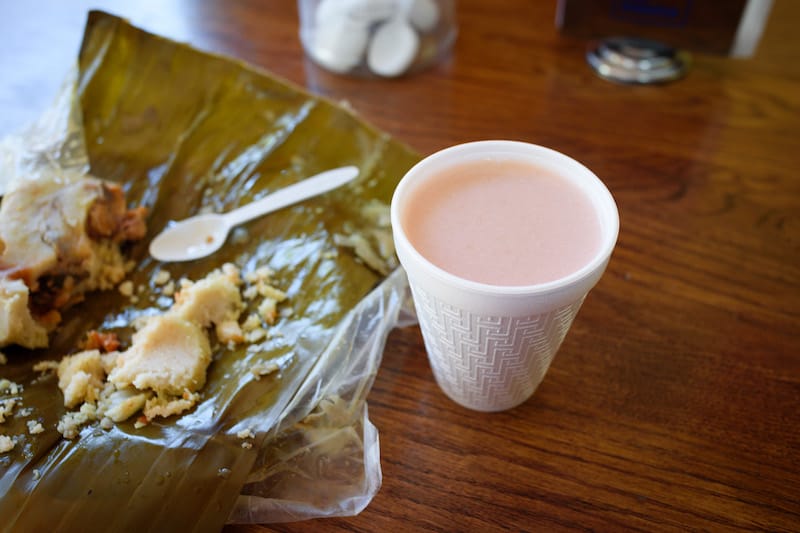
“It’s most common in the pueblos,” says Vicky Juárez, who runs Local 5 or “lo de Vicky” at the back of central Coyoacán’s busy, affordable and delicious Mercado de Comida Coyoacán. Her parents hail from Texcoco, traditionally a farming community now turned suburb of Mexico City, in the surrounding State of Mexico.
Under the watchful gaze of the legendary volcanoes Iztaccíhuatl and Popocatépetl, Vicky’s parents learned to prepare atole in the traditional way and brought it to this blue-and-white-tiled puesto in the city about 40 years ago. Vicky has been in charge for the past 20, serving up atole (mostly flavored with strawberry, guava, and chocolate, also known as champurrado), a variety of tamales and country-style carnitas (marinated, braised and deep-fried pork) alongside her colleagues who offer up some of the best traditional Mexican food in the city at their respective puestos.
“As soon as it gets cold out, people want their atole,” says Vicky, who makes two batches per day: for the mornings and the evenings (the market opens at 10 a.m. and closes at 10:30 p.m.).
Traditionally, atole has been consumed in the morning because of its warming properties as well as its health benefits.
“The most traditional is the champurrado; people love it,” she adds, even though city folk have “lost a bit of the taste” for atole, which is more common in smaller towns across Mexico. Yet the drink is still widely available in Mexico City, even if atolerías haven’t come into style like churrerías.
Aside from its presence in tamalerías, atole is a popular morning drink, sold from large tin vats standing on little carts across town, alongside bustling financial districts or among myriad food stands at metro entrances. These businesses, often unofficial, are advertised with neon-colored card-paper sign that reads “ATOLE,” handwritten with a marker. Sometimes vendors sell it together with pan dulce.
Traditionally, atole has been consumed in the morning because of its warming properties as well as its health benefits, acting as a meal especially when combined with a tamal or bread. It’s not uncommon in Mexico City to see office workers and day laborers crowded around an atole stand before work, sipping styrofoam cups of the piping hot beverage and eating a torta de tamal, literally a tamal placed directly between two slices of bread.
 Without asking Vicky to divulge her secret to making a solid atole, she gave us a bit of an idea of how it’s prepared. “It’s quite simple, really,” she says, pausing to give orders to a young man working for her. He heads off into the crowd and returns a few minutes with some pesos that she quickly tucks away.
Without asking Vicky to divulge her secret to making a solid atole, she gave us a bit of an idea of how it’s prepared. “It’s quite simple, really,” she says, pausing to give orders to a young man working for her. He heads off into the crowd and returns a few minutes with some pesos that she quickly tucks away.
“Milk, maizena (cornstarch), cinnamon and sugar,” she says. “There are also atoles made with water, but we primarily make it with milk here. Occasionally we will make a batch of water-based atole in high-demand seasons like right now, because there are a lot of people who are lactose intolerant.”
“For the milk recipe, you boil a liter of milk with cinnamon. Once it’s boiling, you mix it in another bowl with the maizena and chocolate with another half-liter of milk. Mixing it apart like that allows for it to be thick; the consistency that we associate with atole. Then you bring them together over a low fire so it doesn’t burn, and you stir it, adding as much sugar as you want for your taste, and let it sit for 30 minutes before serving. But really, what gives it its flavor is the cinnamon.”
For the strawberry and guava atoles, Vicky liquifies the fruit in a blender before adding it to the concoction. “If you want it thicker, you can add more cornstarch and milk to it,” she says.
The term atole comes from the Nahuatl word atolli, meaning the beverage long precedes the arrival of Spanish colonizers to Central Mexico. Atolli can be translated as “corn water” or “watered corn” – it was typically prepared with corn, water and chocolate. What the Spanish did add to atole, however, is cow’s milk, as cows were not present in Mexico at the time of the invasion. (Refined sugar was also a later addition.)
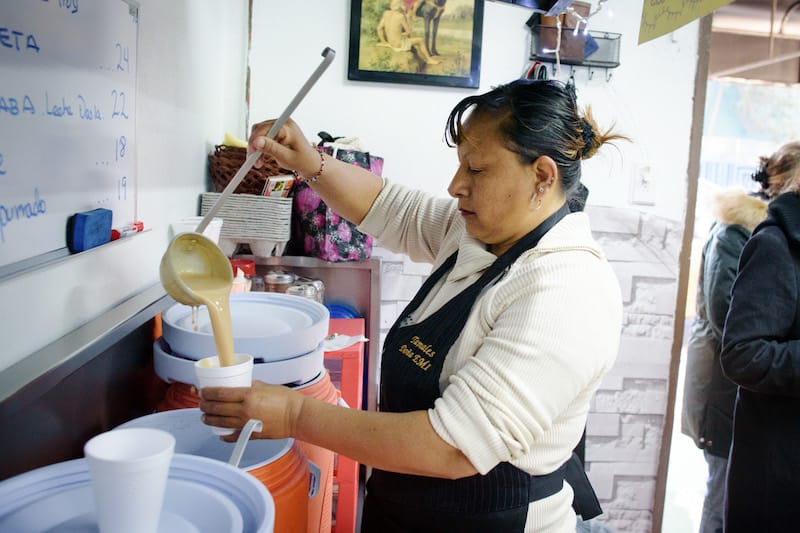
If you mix maizena with hot water directly, it creates balls of corn which doesn’t work out, Vicky says. So when making a water-based atole, the recipe calls for using cold water which then is heated once the corn starch has been fully integrated.
“It’s a very nutritious beverage, it’s almost like a meal in itself,” Vicky says. “I firmly believe that it’s a delicate beverage, however – I would never serve day-old atole. It starts to lose its flavor and its potency throughout the day. It’s something that should be consumed shortly after it’s prepared. That’s why we prepare it twice per day, so there’s a fresh batch for the people who come visit us in the evening.”
Lately we’ve been among those customers stopping by for a less-common atole nightcap – when the temperatures drop, we could quaff this comfort-in-a-cup at all hours of the day.
Editor’s Note: This is the latest installment in our Liquid Assets series, an occasional look at key beverages – alcoholic and non – that help define the culinary cultures that CB covers.
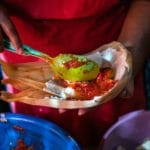 January 8, 2024 Tamales de Tia Tila
January 8, 2024 Tamales de Tia Tila
It’s a cold December afternoon when we arrive at the headquarters of Tamales de Tia Tila […] Posted in Oaxaca September 27, 2022 Liquid Assets
September 27, 2022 Liquid Assets
It was our first Tbilisi summer stroll down the city’s main drag, Rustaveli Avenue; two […] Posted in Tbilisi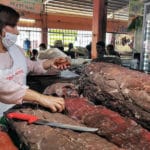 August 27, 2020 CB on the Road
August 27, 2020 CB on the Road
Cecina is a food for the road. In its most common form, the salted and dried meat can […] Posted in Mexico City
Published on January 02, 2020
Related stories
January 8, 2024
OaxacaIt’s a cold December afternoon when we arrive at the headquarters of Tamales de Tia Tila in San Gabriel Etla, about 45 minutes outside of Oaxaca City. Knocking on the door, we catch a whiff of spices and corn that the cold wind quickly steals away. But as soon the door swings open, revealing a…
September 27, 2022
TbilisiIt was our first Tbilisi summer stroll down the city’s main drag, Rustaveli Avenue; two sweaty, newly arrived pie-eyed tourists tripping on the 2001 reality. There were billboards advertising the recent kidnapping of a Lebanese businessman, policemen in crumpled gray uniforms extorting money from random motorists with a wag of their batons, and at the…
August 27, 2020
Mexico CityCecina is a food for the road. In its most common form, the salted and dried meat can last for months, which explains why it was a main source of sustenance for travelers, sailors and soldiers in colonial Mexico. Nowadays, cecina is still known as a thin cut of cured meat – almost always beef…







































